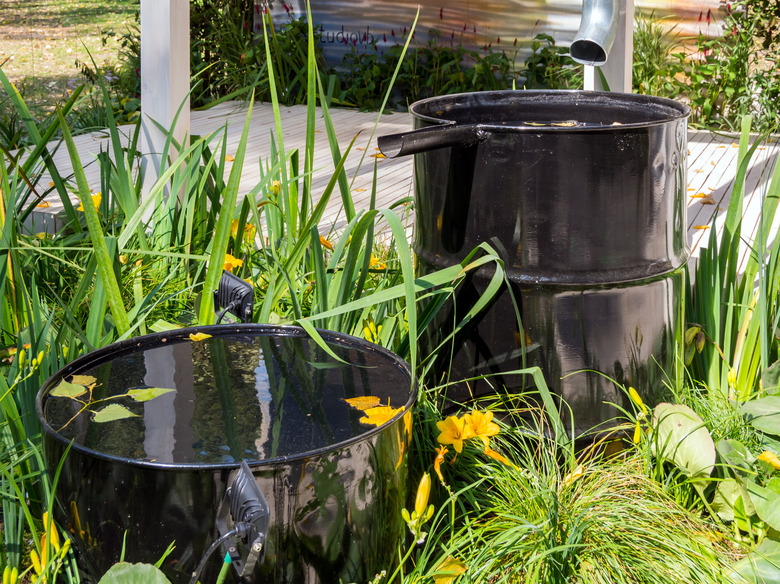Objectives Of Rainwater Harvesting
The aim of rainwater harvesting is to intercept downhill water flow and regulate its movement through the landscape. The objectives of rainwater harvesting depend on the context in which the water is to be used. There are several techniques designed to control water flow and manage its availability throughout the year.
Rainwater may also be stored to prevent or mitigate impacts from flooding and erosion, or to generate hydroelectricity. Rainwater can be stored in a variety of ways. On a small scale, it can be stored in barrels, water tanks and ponds. On a larger scale, it can be stored in dams and reservoirs or pumped into underground aquifers. Permaculture and regenerative farming techniques use water-retaining earthworks to store water within the soil profile.
Why Is Rainfall Harvesting Important?
Why Is Rainfall Harvesting Important?
Access to water is essential for drinking and bathing, agriculture and industrial uses. It is also essential for the health and maintenance of natural ecosystems and the services that they provide. A significant proportion of water used for these purposes is sourced from rainfall.
Rainfall patterns around the world vary, from lush jungle environments with regular rainfall to arid desert regions that can go years without precipitation. Many environments and ecosystems experience seasonal rainfall patterns, with wet periods of the year followed by several months of dry weather. The purpose of rainwater harvesting is to store excess water during rainy seasons for use in drier periods.
Household Use
Household Use
The flat, impermeable surfaces created by houses and infrastructure are able to intercept and redirect large amounts of rainfall. This water can be channeled into water storage systems. Water from roofs can be directed into plastic drums, aluminum tanks or other water storage containers. This water can be used directly for many uses around the home and garden and can be sterilized for drinking water if necessary.
Use in Agriculture
Use in Agriculture
Many agricultural regions rely on rainwater harvesting to sustain crops and livestock during dry periods. Water in agricultural areas is generally stored in dams or in large water tanks. Water may be used to spray onto crops via sprinkler systems, used to flood irrigation canals and fields, or pumped in a trough for livestock to drink.
Permaculture and other natural farming systems use ditches and canals to slow water flow. This reduces erosive potential and gives more time for the water to infiltrate the soil, where its downhill flow is significantly slowed. Retaining water in the soil reduces evaporation and allows it to be used for crops and pastures.
Reduce Flooding and Erosion
Reduce Flooding and Erosion
By capturing and storing rainwater in dams and reservoirs, it is possible to reduce the amount of runoff, erosion and flooding in lower-lying areas. These can range from simple rock barriers and diversion ditches in streams to enormous reservoirs that hold many million of liters.
One example is Lake Mead, which was created by the construction of the Hoover Dam in 1935. By investing in water barriers, as well as the revegetation of upland areas and the strategic use of levees and other flood-control engineering options, significant damage to people, property and agricultural areas can be reduced or avoided.
Prevent Overuse of Aquifers
Prevent Overuse of Aquifers
Many cities and other urban areas depend on underground water reservoirs called aquifers for drinking water and other uses. These are replenished by rainwater, but in many areas the water is being extracted faster than it is replaced. This is due to increased extraction by growing urban populations and reduced rainfall due to climate change. Storing and using rainwater in place of aquifer-derived water reduces the pressures on these systems. Some cities are pumping rainwater and treated wastewater underground in an effort to recharge depleted aquifers.
Reduced Water Costs
Reduced Water Costs
The extraction of water from underground aquifers, the recharge of underground water and the construction of desalination plants are all techniques available to cope with the impacts of reduced rainfall. However, all these methods can be expensive to construct and operate. Harvesting of rainwater can provide low-cost solutions that reduce the need for these more expensive options.
References
Cite This Article
MLA
Michelle, Meg. "Objectives Of Rainwater Harvesting" sciencing.com, https://www.sciencing.com/objectives-of-rainwater-harvesting-12556133/. 30 September 2021.
APA
Michelle, Meg. (2021, September 30). Objectives Of Rainwater Harvesting. sciencing.com. Retrieved from https://www.sciencing.com/objectives-of-rainwater-harvesting-12556133/
Chicago
Michelle, Meg. Objectives Of Rainwater Harvesting last modified March 24, 2022. https://www.sciencing.com/objectives-of-rainwater-harvesting-12556133/
